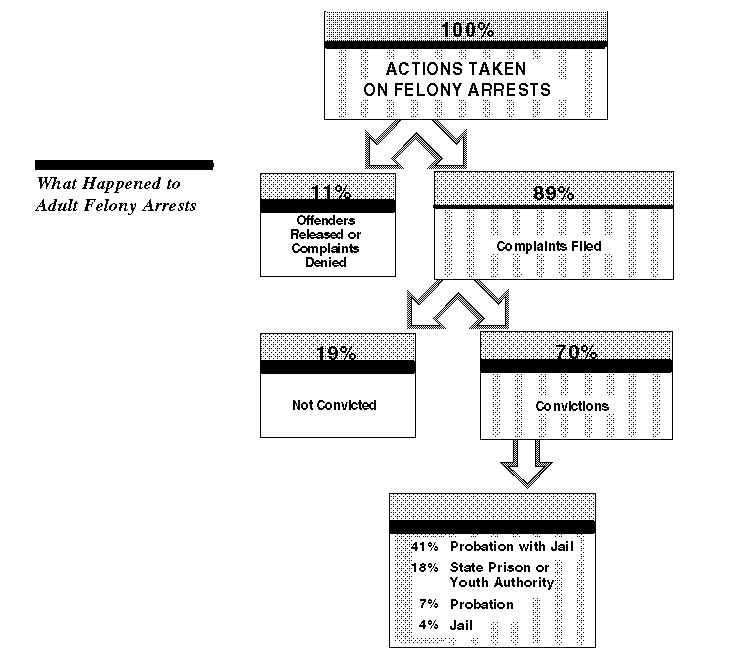
 Legislative Analyst's Office
Legislative Analyst's Office
As we indicated earlier, only about 22 percent of all reported crimes were "solved" in 1993 (that is, a person was charged with a crime). However, in those cases where an adult was charged with a crime, 70 percent result in convictions.

In 1993, about 75 percent of convicted felons were housed and/or supervised by counties. Only about 25 percent of convicted felons are sentenced to the Department of Corrections or the Youth Authority.
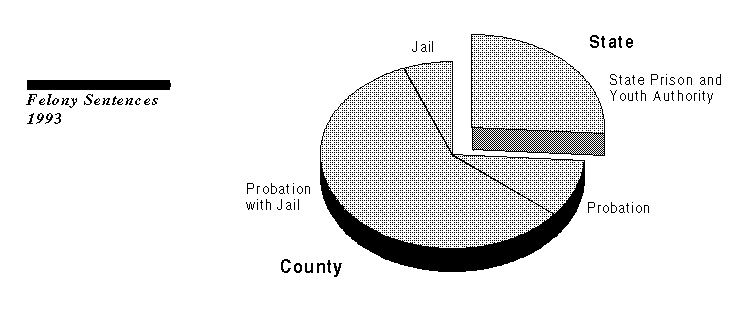
Although most convicted felons are sentenced to local custody (county probation and/or jail), the proportion being sentenced to state custody has more than doubled since 1978.

Adult offenders who are sentenced to county probation or jail, or to state prison, generally have similar backgrounds or profiles. Offenders sentenced to state prison, however, are more likely to have been convicted previously of one or more felonies.
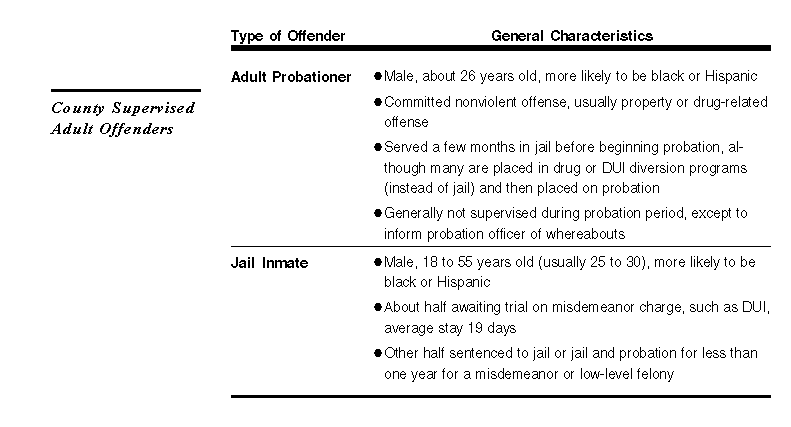

About 40 percent of the state's prison population is incarcerated for a violent offense and 60 percent is incarcerated for a nonviolent offense (property or drug-related offense).
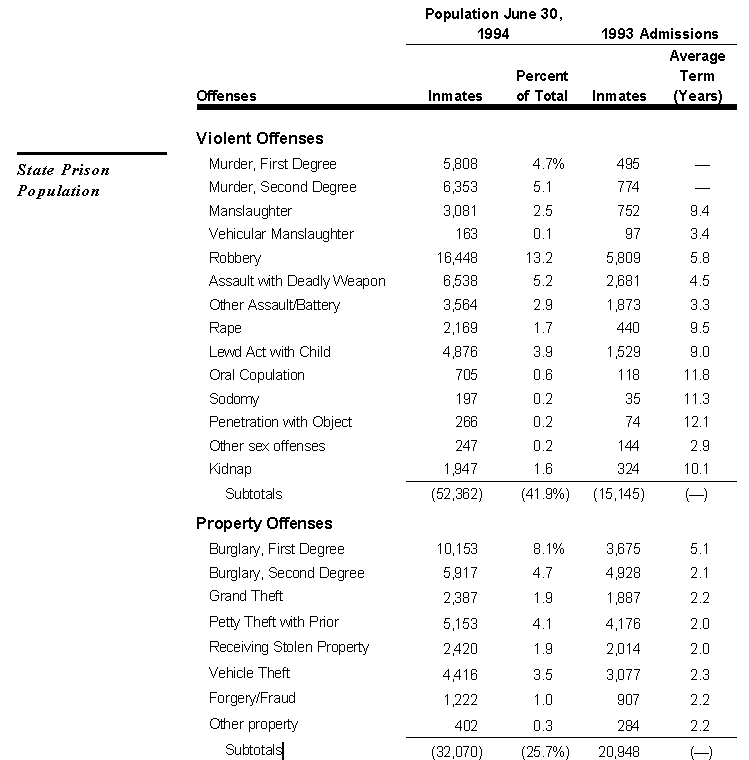
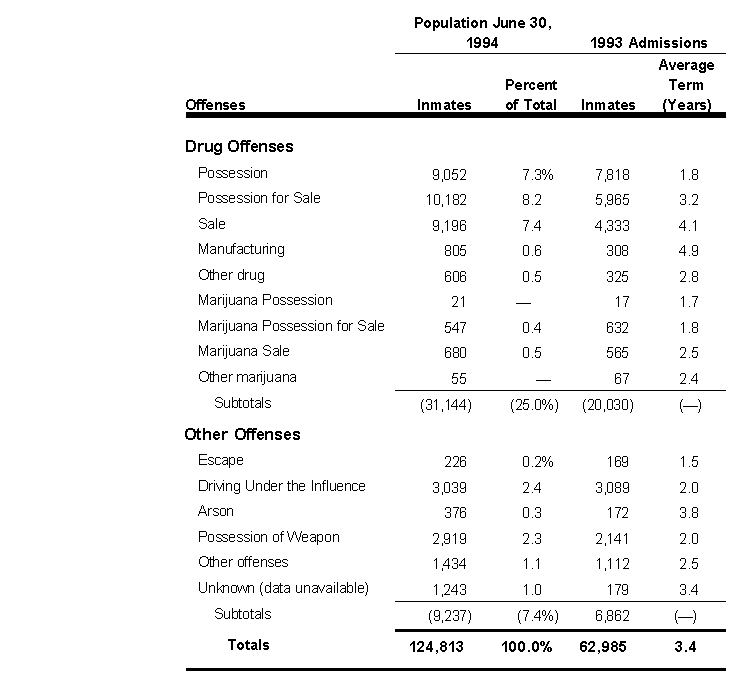
The state's prison and Youth Authority populations have a much higher percentage of blacks and Hispanics than the state's population as a whole. Although the state's male population is more than 50 percent white, the prison population is about 28 percent white and the Youth Authority population is only about 15 percent white. And although black males are only about 7 percent of the state's male population, they comprise about one-third of the populations of both the prison system and the Youth Authority.

Despite the state's massive prison construction program, prison overcrowding will be worse at the end of the decade than it is now. The prison population has more than doubled over the past ten years and is expected to exceed 200,000 inmates by 1999. (This includes the effects of the "Three Strikes and You're Out" legislation which is discussed later.) At that time, prison overcrowding will reach about 255 percent.
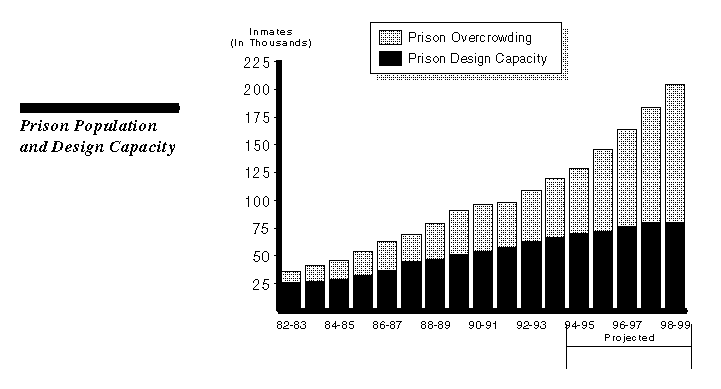
A small change in the sentence length of inmates can result in a significant need for additional prison beds. For example, in 1992-93, the average sentence for male felons increased by about nine days, which resulted in the need for about 500 additional prison beds and increased overcrowding by about 1 percent.
The prison overcrowding has occurred despite the fact that the state now has about 30 prisons, 16 of which were built within the past decade, and several that existed previously were expanded.
In March 1994, the Legislature enacted the "Three Strikes and You're Out" law (Ch 12/94, AB 971, Jones), which requires substantially longer prison sentences for repeat offenders. Proposition 184, which was approved by the voters in November 1994 was virtually identical to the law passed in March.
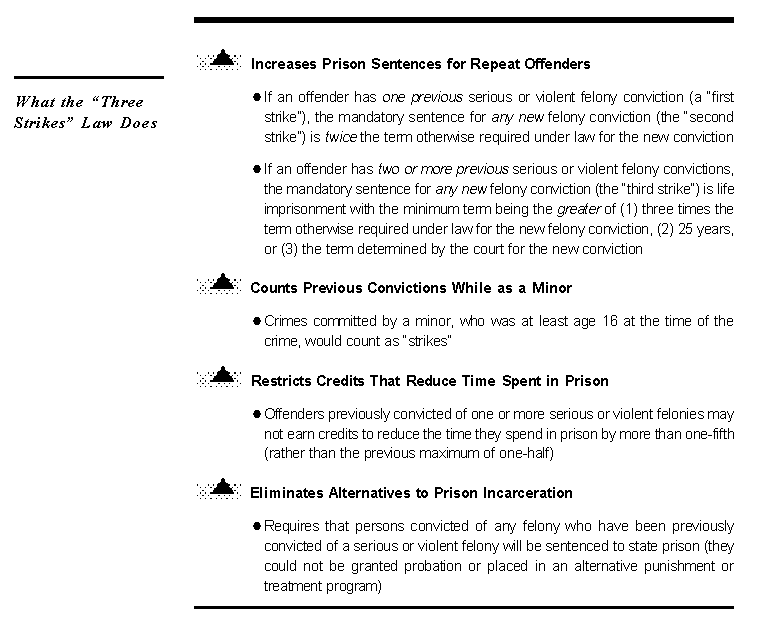

The "Three Strikes" law will increase the state's prison population substantially. The Department of Corrections estimates that the measure will add about 71,000 inmates to the prison system by 1998-99, increasing the population to 144,000 inmates by 2003-04, and further increasing the population to 274,000 inmates by 2026-27 and annually thereafter. As a consequence, the department estimates that the costs of operating the prison system will increase by about $1.4 billion by 1998-99, $3 billion by 2003-04, and $5.7 billion in 2026-27 and annually thereafter. The department also estimates that it will need to build up to 25 new prisons by the end of the decade to keep up with the growth in prison population at a cost of more than $12 billion.
In addition, the measure could result in a variety of additional costs and savings to the state and local governments.
The average per capita cost for an inmate in state prison is about $21,000. Almost half of this cost is to provide security (primarily staff costs) for the offender. The average cost to supervise a parolee in the community is about $2,300. This amount includes the costs for the parole agent and any services provided to the parolee, such as substance abuse treatment or temporary emergency housing.
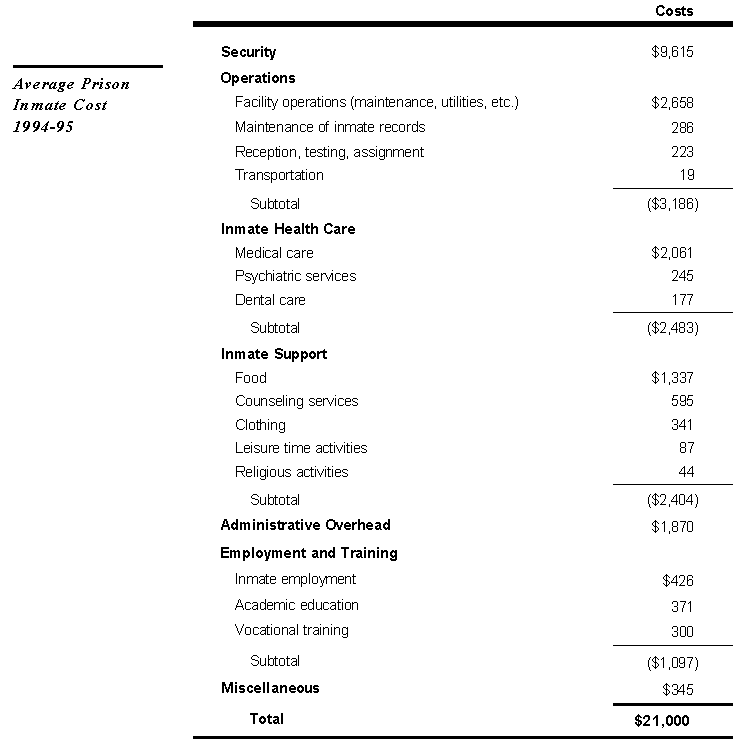
California's 460 jails are operated by both county sheriffs (except in two counties--Napa and Santa Clara--which have county departments of corrections) and police departments. Police department jails are usually only for holding prisoners for less than 48 hours. Long-term incarceration of prisoners awaiting trial, and sentenced jail inmates, is provided by county jails.
Currently, the average daily population in the jails is about 71,000 inmates, and the jails are overcrowded by about 115 percent. There are 27 counties that are under court order to limit their jail populations. As a consequence of these limits, inmates in these jails serve less of their sentences in order for the county to reduce the population and stay in compliance with the court order. For example, in Orange County, an inmate may serve only four months of a one-year sentence because of that county's court-ordered cap.
Since 1980, the voters have approved four statewide bond measures to provide $1.5 billion in state bond funds for construction of almost 30,000 jail beds. Despite this, the population of local jails is expected to climb to more than 100,000 inmates by the end of the decade and overcrowding is expected to increase to about 148 percent.
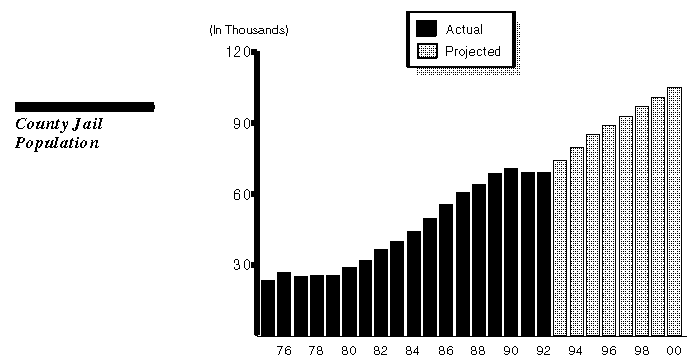
In 1994, California's state and local incarceration rate was above the U.S. average, and was the fourth highest among the ten largest states.
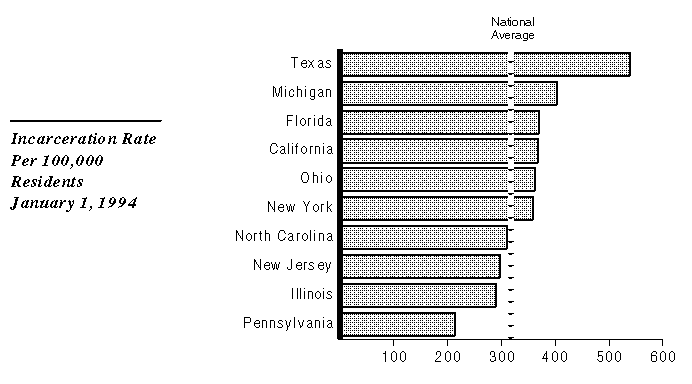
California's incarceration rate has increased almost 300 percent since 1972 while the crime rate has not declined but rather has remained relatively flat. Some researchers argue that this situation should be expected because they believe that incarcerating more people for a longer period of time has no or little impact on reducing the crime rate. Others disagree and argue that the crime rate would have grown significantly if the rate of imprisonment had not increased so significantly.
